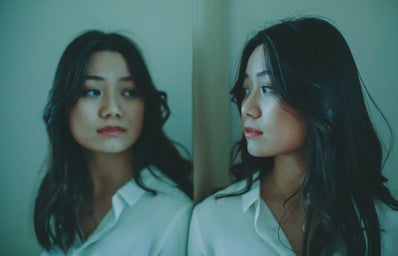Content Warning: Mentions of body image
Over the last couple of years, the idea of a female “second puberty” has risen on social media. The concept involves the body developments women face in their early 20s, such as the recurrence of acne, weight gain, more noticeable curves and more changes as we grow into our adult bodies.
While scientifically, a second puberty cannot occur—as our bodies have already gone through the hormonal process—there are elements, such as changing hormones, that contribute to the concept of the “second puberty.” The main idea to take away from this is the importance of understanding that bodies change, which is a totally natural process of becoming older. It is unfair that we expect our bodies to stay the same as they were when we were 15, 16 and 17 years old. In reality, we are leading completely different lives in our 20s with new experiences and a body that is home to our changing life.
Growing up in a time where social media acts as a environment for comparison and ideas of what our bodies should be like can make it difficult to accept our changing bodies. As we navigate these differences in the mirror, we are faced with ideas of how our bodies should look. This can make for an isolating transition when the reality is that many women experience this shift in their 20s.
Social media’s constraint has not ended. Recently, The New York Post published a headline titled “Bye Bye Booty: Heroin Chic Is Back.” Headlines like these perpetuate ideas we’ve been trying to overcome with body positivity and acceptance movements. It encourages the thought that a woman’s body can go in and out of fashion, minimizing it down to a trend.
As many of us have grown up with social media, headlines like these are gloomily familiar. Unfortunately, young girls growing up today must also be subjected to these pressures, which is why conversations regarding puberty, changing bodies, and body image are so crucial at a time when certain media outlets continue to stay on the wrong side of history.
It can be scary to watch your body change. Especially when it feels like it’s happening in the blink of an eye. You may experience a period of questioning, and wondering why the same body you knew so well suddenly looks so new and not your own. This process is something to not only learn to understand but an empowering experience. There is strength in embracing a changing body and accepting it for every stage that it presents itself.
In reality, the body is a constantly changing mould impacted by our experiences and lives. The changes we experience in our 20s won’t be the only ones. As we get older, our bodies will continue to adapt, and if we can already understand and embrace this process now, we are saving ourselves a strenuous life of self-doubt and resentment.
One helpful practice I’ve found in body acceptance is a simple and possibly obvious one. If you wouldn’t like your friend to be spoken to negatively regarding their bodies, why do it to yourself? Or better yet, consider your younger self. Would you speak to a younger version of yourself in such a demeaning way?
Consider how you speak toward others. Take time to uplift the friends you have. And if you are currently involved in a circle where this isn’t the case, it might be time to reconsider the people you keep close to you. The bottom line is to take care of yourself, be graceful and give yourself enough patience to accept yourself for exactly who you are.


